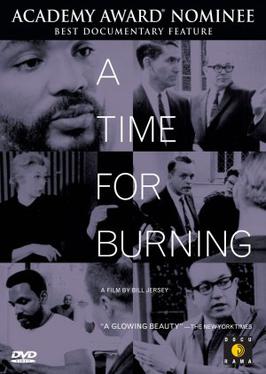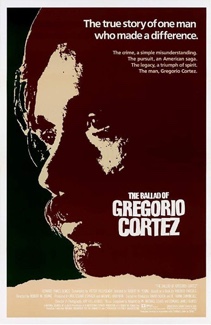Related Research Articles

Eaux d'artifice (1953) is a short experimental film by Kenneth Anger.

The Fall of the House of Usher (1928) is a short silent horror film adaptation of the 1839 short story "The Fall of the House of Usher" by Edgar Allan Poe. The movie was co-directed by James Sibley Watson and Melville Webber, and starred Herbert Stern, Hildegarde Watson, and Melville Webber. It tells the story of a brother and sister who live under a family curse. An avant-garde experimental film running only 13 minutes, the visual element predominates, including shots through prisms to create optical distortion. There is no dialogue in the film, though one sequence features letters written in the air moving across the screen.
Frank Film is a 1973 American animated short film by Frank Mouris. The film won an Academy Award for Best Animated Short Film and was inducted into the National Film Registry in 1996.

Manhatta (1921) is a short documentary film directed by painter Charles Sheeler and photographer Paul Strand.

A Movie is a 1958 experimental collage film by American artist Bruce Conner. It combines pieces of found footage taken from various sources such as newsreels, soft-core pornography, and B movies, all set to a score featuring Ottorino Respighi's Pines of Rome.

Empire is a 1965 American underground film by Andy Warhol. When projected according to Warhol's specifications, it consists of eight hours and five minutes of slow motion black-and-white footage of an unchanging view of New York City's Empire State Building. The silent film does not have conventional narrative or characters, and largely reduces the experience of cinema to the passing of time. Warhol stated that the purpose of the film was "to see time go by."

A Bronx Morning is a 1931 American Pre-Code avant-garde film by American filmmaker Jay Leyda (1910–1988).
Nostalgia, styled (nostalgia), is a 1971 American experimental film by artist Hollis Frampton. It is part of his Hapax Legomena series.

Bruce Baillie was an American experimental filmmaker.
Structural film was an avant-garde experimental film movement prominent in the United States in the 1960s. A related movement developed in the United Kingdom in the 1970s.
OffOn is an experimental film created by Scott Bartlett made and released in 1968.

A Time for Burning is a 1966 American documentary film that explores the attempts of the minister of Augustana Lutheran Church in Omaha, Nebraska, to persuade his all-white congregation to reach out to "Negro" Lutherans in the city's north side. The film was directed by San Francisco filmmaker William C. Jersey and was nominated for Best Documentary Feature in the 1967 Academy Awards.
Glimpse of the Garden is a 1957 five-minute short experimental film made by Marie Menken, showing film clips of a garden, with birds chirping for the soundtrack. In 1958, the film won an award at the Exposition Universelle et Internationale at Brussels. In 2007, the film was included in the annual selection of 25 motion pictures added to the National Film Registry of the Library of Congress being deemed "culturally, historically, or aesthetically significant" and recommended for preservation.
Free Radicals is a black-and-white animated film short by avant-garde filmmaker Len Lye. Begun in 1958 and completed in 1979, Lye made the film by directly scratching the film stock. The resulting "figures of motion" are set to music by the Baguirmi tribe of Africa.
Early Abstractions is a collection of seven short animated films created by Harry Everett Smith between 1939 and 1956. Each film is between two and six minutes long, and is named according to the chronological order in which it was made. The collection includes Numbers 1–5, 7, and 10, while the missing Numbers 8 and 9 are presumed to have been lost.

Mildred "Chick" Strand was an American experimental filmmaker, "a pioneer in blending avant-garde techniques with documentary". Chick Strand contributed to the movement of women's experimental cinema in the early 1960s–1970's. Strand's film making and directing approach incorporates personal elements from her own life experiences and societal forces and realities. The film Elasticity (1976) is an example of Strand's attempts at autobiographical work that also incorporates Strand's specific standpoint on certain social issues. Feminist issues and anthropological inquiries about the human condition are frequent themes in Strand's films. However, because Strand's films and work were often deeply personal and subjective, they were often rejected from male-dominated academic circles of anthropologists and critiqued for being non-academic works.
The Lead Shoes is a 1949 experimental film directed by Sidney Peterson at Workshop 20 at the San Francisco Art Institute. The film was made using distorting lenses. The film is a 17-minute black and white short.
I Am Joaquín is a 1969 short film by Luis Valdez, a project of his El Teatro Campesino.

The Ballad of Gregorio Cortez is a 1982 American Western film directed by Robert M. Young and starring Edward James Olmos as Gregorio Cortez. It is based on the book With His Pistol in His Hand by Americo Paredes.
My Name Is Oona is a 1969 American avant-garde short film directed by Gunvor Nelson. It uses footage of her daughter Oona that has been optically printed, with Oona's voice used for the soundtrack. The film was selected for preservation in the National Film Registry in 2019.
References
- ↑ "The Renegades: American Avant-Garde Film, 1960-1973-Walker Art Center on YouTube". YouTube . 10 September 2012. Archived from the original on 2021-12-22. Retrieved Apr 11, 2020.
- ↑ "The Renegades: American Avant-Garde Film, 1960–1973". walkerart.org. Retrieved Apr 11, 2020.
- ↑ "Castro Street" . Retrieved Apr 11, 2020– via mubi.com.
- ↑ "The Films of Bruce Baillie - by Michael E. Grost". mikegrost.com. Retrieved Apr 11, 2020.
- ↑ "Complete National Film Registry Listing". Library of Congress. Retrieved 2020-05-29.
- ↑ "Preserved Projects". Academy Film Archive.